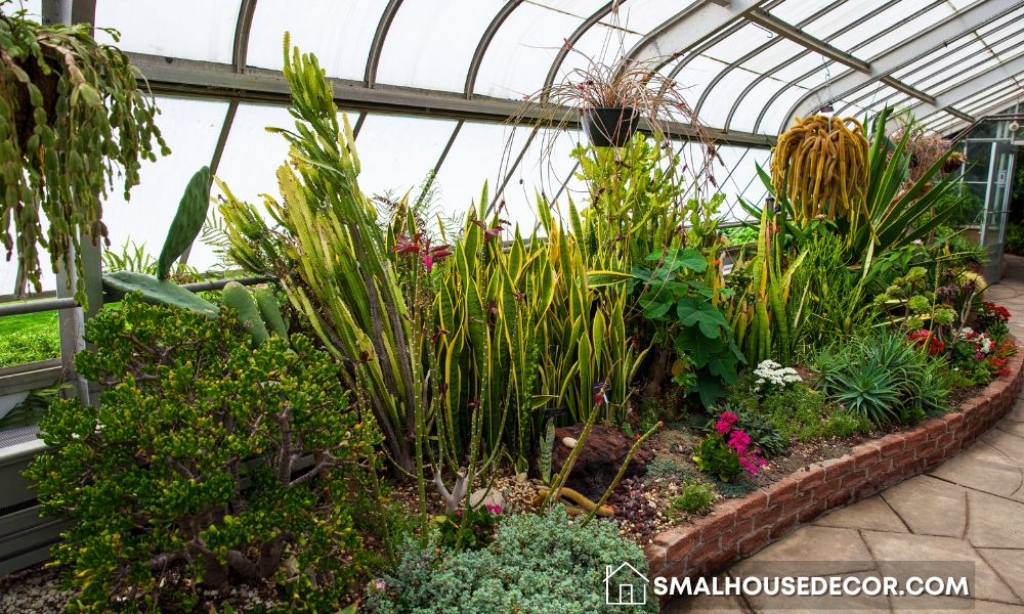Hydroponic indoor gardening is an innovative and increasingly popular method to grow plants without soil, by allowing their roots to grow in nutrient-rich water solutions. This approach offers numerous advantages, including a compact and clean gardening system, faster plant growth, and the ability to grow plants year-round, regardless of the weather or outdoor conditions.
Indoor hydroponic gardens can range from small countertop systems to large-scale and automated set-ups, and many plants can thrive in these systems, including herbs, vegetables, and even some fruit trees. One popular option for beginners is to use indoor grow tent kits, which provide all the essentials for starting a hydroponic garden in a compact and easy-to-assemble package.

Choosing the Right Plants for Your Indoor Garden
When you’re starting, it’s crucial to opt for plants that are well-suited for hydroponic systems and match your skill level, space, and resources.
1. Herbs and Leafy Greens
These are the best choices for beginners, as they are easy to grow and have a relatively fast growth rate. Examples include basil, mint, parsley, cilantro, dill, lettuce, spinach, and kale. They require small spaces and can adapt well to various hydroponic systems, including DIY setups.
2. Vegetables
In addition to leafy greens, other vegetable plants can be suitable for hydroponic systems. Tomatoes, peppers, and cucumbers are popular choices. However, they require more resources and care, as they demand strong lighting, larger containers, and careful nutrient balance.
3. Fruits
Some fruiting trees and plants can be grown indoors, such as strawberries, blueberries, and dwarf fruit trees. However, they often need particular environmental conditions, which can be more challenging for beginners.
4. Flowers
While not as easy as herbs or leafy greens, flowers like marigolds, petunia, and zinnia can add beauty and diversity to your indoor garden.
Also Read: How to Set Up Your Own Mushroom Garden for Year-Round Harvest
Maintaining Your Indoor Hydroponic Garden: Tips and Tricks
Once you have chosen your plants, the ongoing care of your hydroponic system is critical. Here are some essential tips to ensure your indoor garden stays productive and healthy.
1. Lighting
Many hydroponic systems rely on artificial light to support plant growth. There are different types of grow lights –fluorescent, LEDs, and high-intensity discharge (HID) – that vary in cost, energy efficiency, and spectrum. Research the best option for your plants, and ensure they receive sufficient light by placing them close to the source (4 to 18 inches, depending on the light intensity) and providing light for an adequate amount of time (usually 14 to 18 hours per day for most plants).
2. Nutrient Solutions
As your plants are not growing in soil, hydroponic systems require specially formulated solutions to supply the plants with the essential nutrients they need. Ensure you choose the correct nutrient solution for the specific plants in your garden, and follow the instructions for the appropriate concentration and frequency of application.
3. Water pH Level
Maintaining the optimal pH level in the water solution is critical for plant growth, affecting the plant’s ability to absorb nutrients. Most plants prefer a pH of 5.5 to 6.5, and using a digital pH meter to check the levels regularly will help ensure the best conditions for your plants.
4. Temperature and Humidity
Indoor hydroponic gardens often need controlled temperatures and humidity to thrive. Ensure your garden’s environment is within the optimal range for your specific plants, and consider investing in heaters, fans, or humidifiers if necessary.
Also Read: The Ultimate Guide To Buying And Maintaining Garden Hoses
Troubleshooting Common Issues in Your Indoor Hydroponic Garden
As with any garden, indoor hydroponic systems can experience issues like pests, diseases, and nutrient deficiencies. Familiarizing yourself with potential problems and their solutions will significantly improve your chances of maintaining a healthy garden.
1. Pests
Common pests in indoor gardens include aphids, spider mites, and whiteflies. To manage these, you can use insecticidal soap, neem oil or introduce beneficial insects, such as ladybugs or lacewings, as a natural form of pest control.
2. Diseases
Fungal diseases can be particularly challenging in hydroponic gardens, as the increased humidity can create a favorable environment for their growth. To prevent diseases, ensure proper air circulation, clean your system regularly, and avoid overcrowding your plants.
3. Nutrient Deficiencies
Signs of nutrient deficiencies include yellow leaves, weak growth, or stunted plants. To correct these problems, regularly monitor your nutrient solution concentration and pH levels, and replenish or adjust the nutrients as needed.
Harvesting and Enjoying Your Indoor Garden Bounty
As your plants mature, knowing how and when to harvest the fruits of your labor is essential. You can start harvesting herbs and leafy greens when the plant is mature, and there are enough leaves to support continued growth. This is typically about 4 to 6 weeks after starting the seeds.
Ensure you harvest in a way that encourages further growth, such as pruning or pinching off leaves rather than cutting entire stems. Harvest fruits and vegetables when they’ve reached their ideal size and color.
Growing Your Indoor Hydroponic Garden Skills
Setting up and maintaining an indoor hydroponic garden can be an enriching and rewarding experience, providing you with a continuous supply of fresh, high-quality produce. This beginner’s guide should help you start and grow your indoor garden successfully but remember that learning and adapting as you go is part of the process.
Experiment with different plants, systems, and techniques, and embrace any challenges that come your way. With patience, dedication, and a curious mindset, you’ll be well on your way to becoming an accomplished indoor gardener.